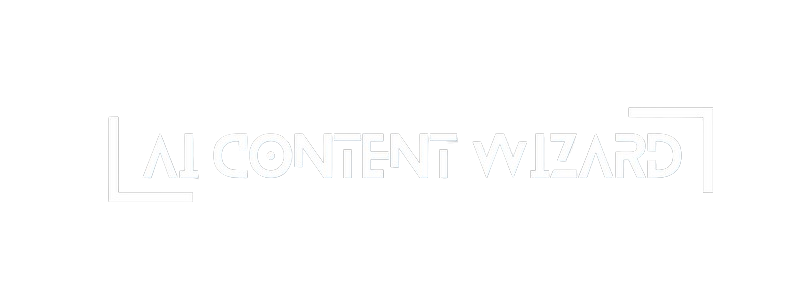1. Introduction #
This page explains the underlying process and key functionalities of the Content Streaming module. The module is designed to automate the creation and publication of content sourced from various channels—such as Telegram channels and RSS feeds—while ensuring SEO-friendly output. The system integrates seamlessly with AI Content Wizard to fetch, process, and publish content according to user-defined settings.
Important: This process leverages scheduled tasks (cron jobs), AJAX-driven updates, and dynamic user interfaces to provide real-time monitoring and control over content streaming.
2. Workflow Overview #
The content streaming process involves several interlinked components that work together to generate and publish content. The core workflow includes:
- Channel Configuration:
Administrators add channels (e.g., Telegram, RSS) and configure essential parameters such as channel type, URL, associated category, language, and status. - Settings and Scheduling:
The system retrieves global settings (like the publishing interval) and individual channel settings. A cron job is scheduled to trigger the content generation and publication process at defined intervals. - AJAX and Real-Time Updates:
AJAX scripts are used throughout the interface to update channel statistics, load the publication queue, and display logs without needing to reload the entire page. This ensures that administrators have access to the latest data in real-time. - Content Processing:
When triggered, the system fetches the configured channels and processes incoming data. This includes:- Scanning channels to gather new entries.
- Preparing the content by checking for duplicates.
- Generating or retrieving associated media (images, thumbnails) based on additional settings.
- Updating the publication status of each entry (e.g., Waiting, Published, Generated, Missed).
- Publication and Logging:
Generated posts are queued for publication. The system tracks the status of each entry in a detailed log, which displays information such as channel, titles, category, language, and publication time. Logs help administrators monitor and manage the publishing process. - Modals and Floating Windows:
Additional modals and floating status windows provide quick access to advanced settings, recent publication logs, and real-time statistics for global AI settings.
3. Key Functionalities #
Channel Management #
- Channel Addition and Editing:
Administrators can add new channels and edit existing ones through a user-friendly form. Each channel block includes:- Channel Type: Select between “Telegram” and “RSS”.
- Channel Name and URL: Provide descriptive names and valid URLs.
- Category Assignment: Define which category the content should fall under.
- Language Selection: Specify the language to guide the content generation.
- Status Toggle: Enable or disable the channel.
Advanced Settings #
- Advanced Options Toggle:
Each channel block includes an expandable section with advanced options such as:- Author Selection: Choose the post author.
- Suggestions (Wishes): Input custom instructions to guide content generation.
- Thumbnail Settings: Options to use a post image as a thumbnail or generate one from a video.
- Internal Image Settings:
- Enable insertion of media from the post or trigger AI-based image generation.
- Option to disable AI-generated images if desired.
Process Control and Monitoring #
- Process Control Buttons:
At the bottom of the page, administrators have controls to:- Start/Stop Publishing: Begin or halt the automatic publication process.
- View Post Queue: Check the current generation queue when the process is active.
- Clear Publication Log: Remove outdated log entries.
- Reset In-Progress Posts: Reset posts that are stuck in a pending state.
- Publication Status Table:
A table displays the latest publication logs, detailing:- Channel name
- Original and generated titles
- Category and language
- Post status (e.g., Waiting, Published, Generated, Missed)
- Scheduled publication time
Real-Time Feedback and Notifications #
- Floating Status Window:
A floating window on the page provides an at-a-glance view of global AI settings (e.g., text model, image model, watermark settings) and notifies administrators of unsaved changes. - Tooltips and Modals:
Interactive tooltips and modals offer additional context and guidance on specific fields and features, ensuring users understand each option.
4. Customization and Extensibility #
- AJAX-Powered Updates:
All dynamic content (statistics, logs, queue status) is refreshed via AJAX, ensuring that the information remains up-to-date without page reloads. - Custom CSS and Inline Styling:
The interface uses custom CSS and inline styles to ensure a consistent design. Animations (such as pulsating effects) draw attention to critical information, such as unsaved changes. - Localization Support:
All textual elements are localized, enabling administrators to work with the interface in their preferred language.
5. Conclusion #
The Content Streaming module provides a robust and automated approach to sourcing and generating content from multiple channels. Its powerful combination of scheduling, AJAX updates, advanced configuration options, and real-time monitoring allows administrators to efficiently manage content that is both timely and SEO-optimized.
By using this interface, you ensure a seamless flow of high-quality, relevant content that aligns with your website’s editorial strategy while maintaining control over every aspect of the content streaming process.




